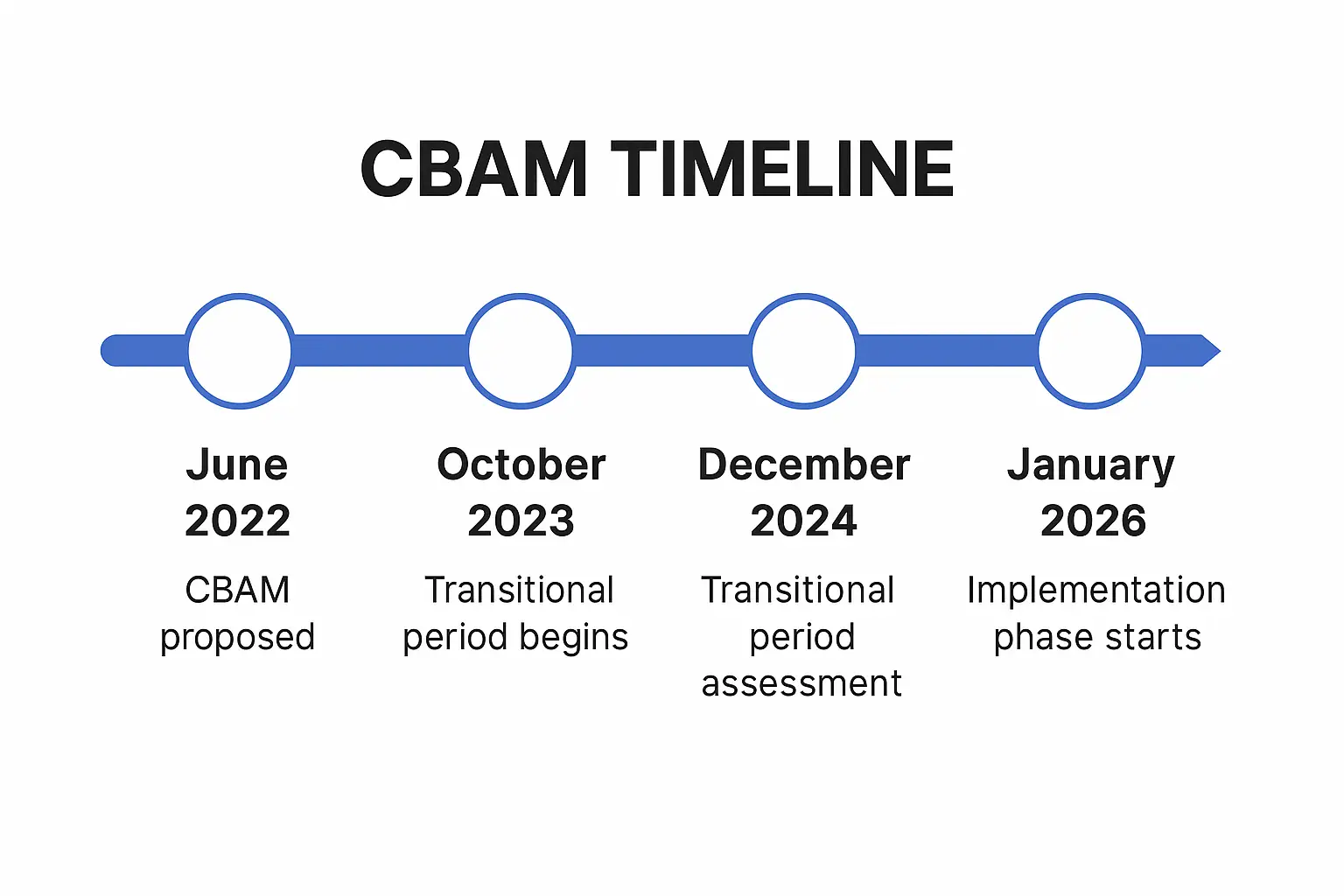The European Union’s Carbon Border Adjustment Mechanism (CBAM) is more than just another regulation—it marks a paradigm shift in global trade. For exporters in Turkey, the UAE, and other non-EU countries with energy-intensive industries, CBAM introduces new carbon-related costs, transparency obligations, and strategic pressure to decarbonize
What is CBAM?
CBAM is a climate policy tool introduced by the EU to level the playing field between EU-based manufacturers and foreign producers.
Starting in 2026, importers of certain goods into the EU must declare the embedded CO₂ emissions of their products and purchase CBAM certificates, priced similarly to the EU Emissions Trading System (EU ETS).
The goal: Prevent carbon leakage and drive global decarbonization through fair carbon pricing
Which Products Are Affected?
In its initial phase, CBAM applies to:
- Steel and Iron
- Aluminium
- Cement
- Fertilizers
- Electricity
- Hydrogen
More sectors such as chemicals, glass, plastics, or textiles may follow in future phases
Who Is Impacted?
Exporting companies in:
-
Turkey, with major steel, cement, and aluminium exports to the EU
-
UAE and GCC countries, where electricity-related emissions are relatively high
-
North Africa and Asia, especially in EU-oriented supply chains
CBAM affects both direct exporters and companies that supply carbon-intensive inputs to EU-based manufacturers.
What Must Companies Do?
To remain competitive in the EU market, companies must:
-
Measure and report embedded emissions (e.g. Scope 1 and 2)
-
Submit CBAM declarations (voluntarily from 2023, mandatory from 2026)
-
Purchase CBAM certificates if no equivalent carbon pricing exists in their country
-
Analyze and decarbonize supply chains to minimize long-term exposure
How Haas Sustainable Consulting Supports You
We offer a strategic 3-phase pathway to CBAM compliance and long-term decarbonization. Our services include:
-
CO₂ accounting aligned with GHG Protocol, ISO 14064, and EU CBAM reporting rules
-
Technical planning for waste heat recovery, solar PV, H₂-ready systems, and high-efficiency equipment
-
Development of decarbonization roadmaps and EU-compliant documentation
-
Identification of funding options and integration into ESG and Net Zero strategies
Conclusion
CBAM is not just a regulatory obligation—it’s an opportunity to position your business as a climate-conscious leader and secure long-term access to the EU market.
The time to act is now. Use the transition period until 2026 to measure, plan, and reduce emissions—before carbon becomes a cost.
